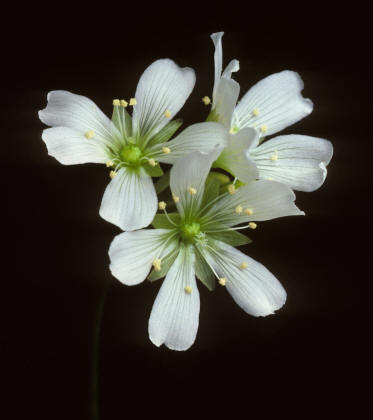| People are fascinated with the mystique that surrounds "man-eating
plants". Old movies typically come to mind, featuring an enormous
green plant crawling out of the jungle toward a group of hysteric people
running for their lives. Do you know the
ones I'm talking about? Just for fun, check out this clip!
http://www.youtube.com/watch?v=kDHMhSgIdiY

Photo - Carnivorous Plant Dionaea by Makoto Honda
But the Venus Fly Trap? It wouldn't
hurt a fly! Well, actually it would, but it would never harm a
human, much less eat one. In fact, Charles Darwin called it "the
most wonderful plant in the world."
Now that your initial fear has been lifted, lets begin with the
classification of the Venus Fly Trap.
Classification of Dionaea
muscipula
| Common Name |
Venus Fly Trap |
| Domain - Eukarya |
They are multicellular organisms containing membrane-bound
organelles. |
| Kingdom - Plantae
|
All are photosynthetic and sexually reproducing with an
alternation of generations between
gametophyte and
sporophyte. |
| Phylum - Anthophyta |
Flowers are produced by these organisms and
double fertilization is a
characteristic of reproduction. |
|
Class - Magnoliopsida |
They are dicots. |
|
Order - Caryophyllales |
They have free-central
or basal placentation. |
|
Family - Droseraceae |
They are carnivorous plants that use traps to catch their
prey. |
| Genus - Dionaea |
All have marginal spines that assist in catching their prey. |
| Species - Dionaea muscipula |
This is a monotypical
species. |
The Venus Fly Trap is also a member of the
Choripetalae group.
This group has two specific characteristics. Firstly, the petals
of flowers are not joined together. Secondly, the flowers
have radial symmetry. A picture of a Venus Fly Trap's
flower is shown below. Can you identify its characteristics
of this group?

Photo - Carnivorous Plant Dionaea by Makoto Honda
Want more information? Check out the phylogenetic tree.
Heritage
|


